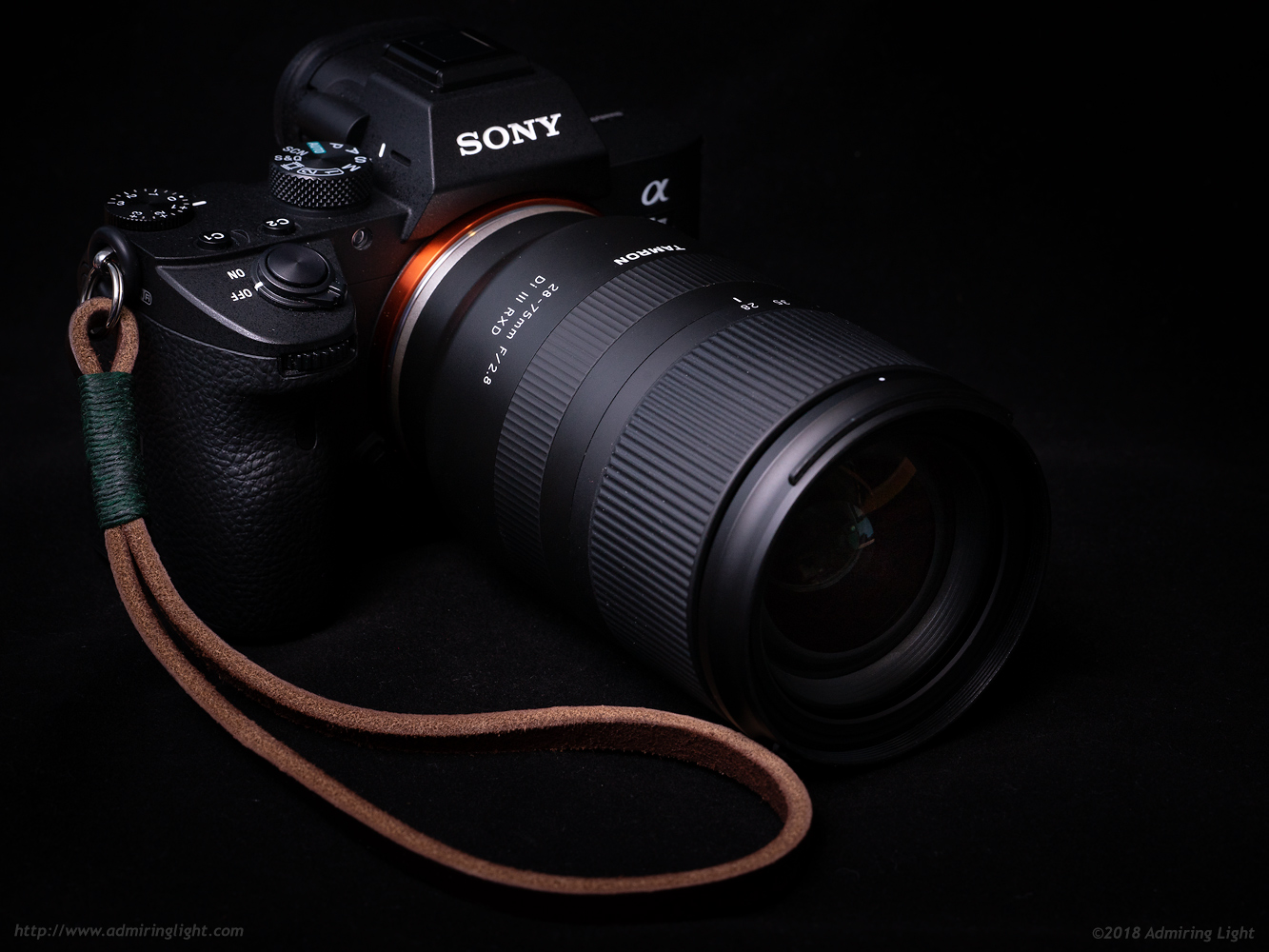Image Quality
When the Tamron 28-75mm f/2.8 was announced, the question that made its way to the top of people’s minds was, “will this be as good optically as the Sony 24-70mm f/2.8 GM.” The answer is: No. It’s not as good as the GM. However, it is a very good lens, and it’s not too far behind. Given the huge savings and far more compact package, the Tamron may also be the *right* choice for a lot of people when considering these two lenses. Let’s look at the optical properties.
Sharpness
The first thing that came to my mind when I reviewed the Sony 24-70mm f/2.8 is how sharp it was. The Tamron doesn’t quite reach the lofty sharpness of the GM, but it does a very nice job in this department. The lens is sharpest at 28mm, and is quite sharp across most of the image frame right from f/2.8. Stopping the lens down brings edge and corner sharpness up, and by f/8-f/11, it’s very sharp all the way to the corners.

Performance at the middle focal lengths is similar, but absolute resolution drops a touch the further you zoom out. By 75mm, the lens still maintains good sharpness at f/2.8, but the edges are a bit softer here, and it’s not quite as crisp as at the wide end. Stopping down brings the edges in line nicely, while the corners retain just a touch of softness.

In all, it’s a very nice performance that works well for both wide open and stopped down work. The only exception is at close focus distances. The Tamron 28-75mm has very good maximum magnification, reaching 1:2.9 at the wide end and 1:4 at the long end, providing near macro-range focusing capabilities that extend the versatility of the lens. However, there is spherical aberration that rears its head at very close focus distances, which softens detail considerably when shooting at f/2.8, most notably at the long end of the zoom range. Stopping down to f/4, or even better f/5.6, will help eliminate the spherical aberration, and at these apertures, sharp results are available at any focus distance.
Bokeh
The bokeh of the Tamron 28-75mm is not easy to describe in one catch-all statement. The bokeh is fairly variable depending on focus distance, aperture and focal length. Bokeh is most pleasing at the wide end of the zoom, where shots at f/2.8 and with reasonably close focus produce imperfect yet fairly pleasing out of focus highlights.

At longer focal lengths close up, bokeh is also fairly smooth, but as you focus further away, especially at the long end of the zoom, the out of focus area is a fair bit harsher. The biggest issue in the bokeh is that it is very high contrast, and with some bright ring outlining, it can create a rough look in many situations. Also, at the longer end of the zoom range, there is visible mechanical vignetting of the blur discs that occurs at the edges, leading to cats eyes and some cut off specular highlight circles near the edges, leading to a somewhat swirly appearance. Stopping down softens the edges of the blur discs, so the bokeh evens out a bit when shooting at f/4-f/8, though of course there is less absolute blur at these apertures as well.

In all, the performance is fine for a zoom of this type, but a lens like the Sony GM does a better job overall at smoothing backgrounds.
Color, Contrast and Chromatic Aberration
The Tamron, like most modern lenses, maintains high contrast and vibrant color at most every setting, save for wide open close focus, where spherical aberration dulls the contrast some. It’s a generally pleasing look, aside from the contrast in the bokeh as noted above. The lens performs well for general use and fits in nicely with the other high quality Sony lenses.

There is a bit of lateral chromatic aberration with the Tamron that is easily corrected in postprocessing, and it becomes more pronounced at very close focus distances. It’s not a major deal, but you will want to check that ‘remove chromatic aberration’ box in Lightroom. Longitudinal CA is very well controlled, however, with just the slightest hint of blue/yellow fringing fore and aft of the focus point.
Distortion, Flare and Vignetting
The Tamron 28-75mm f/2.8 displays a very typical distortion profile for a standard zoom lens. Barrel distortion is fairly pronounced at wide focal lengths which then transitions into moderate pincushion distortion at the long end. For the past several weeks, when I required distortion correction, I successfully used the existing profile for the DSLR version of the 28-75mm, which wasn’t 100% accurate, but was good enough. However, Adobe just released an update that includes a proper native profile for this lens to correct distortion.
Flare control isn’t bad for a standard zoom lens. With point light sources indoors, there were no real issues. Outside when shooting into the sun, the lens maintains good contrast, but ghosting can be an issue, and the ghosts change depending on focal length and aperture. See below for one example.

The 28-75mm displays somewhat pronounced vignetting at wide apertures that eases a bit when stopping down, but never really goes away entirely. In my opinion, it’s not too objectionable, but I prefer a bit of vignetting in my lenses in most cases.
When you look at the whole picture, the Tamron is a very good lens optically, with very good sharpness, excellent control of longitudinal CA and the other optical properties are in-line with other standard zoom lenses. It’s not quite the optical superstar that the Sony GM is, but it also punches well above its price point, and provides very nice image quality throughout the zoom and aperture range.


Great review.
I love your leather wrist. Where is it from?
Best,
Bjoern
Thanks! The wrist strap is from Gordy’s Camera Straps: https://www.gordyscamerastraps.com – This is my third one from them (the others are several years old and still in great shape…I have a black one with silver thread on my Fuji X-T20, and the other, a black strap with orange thread on my A7 II. This one is dark brown with green, as you can see)
Many thanks, Jordan!
Thanks for the review Jordan.
Howdoes it perform compared to the Sony 28mm f/2?
I have a GAS question. Sorry…
I want to change my camera system (Olympus with 12-40mm and 45mmf1.8).
I hesitate between the Fujifilm X-H1 & 16-55mmf2.8 and Sony A7III & Tamron 28-75mmf2.8 for kid’s portrait, street photography and trips.
I like the ergonomic and EVF of Fuji, and Eye AF, battery life of Sony.
As you notice the bad bokeh on Tamron, I hesitate more.
Have you some advice ?
Thank you in advance.